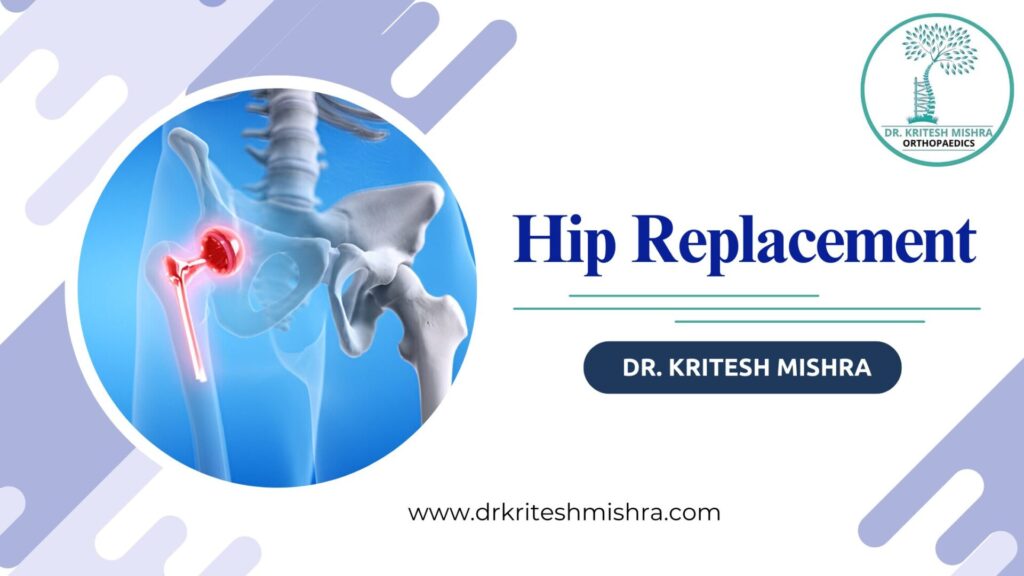Hip problems can cause severe pain and limit mobility, making daily activities difficult. One effective solution for such issues is Hip Reconstruction. This procedure helps restore function and relieve pain in people suffering from hip injuries, arthritis, or joint damage.
Dr. Kritesh Mishra Joint Replacement & Sports Injury Specialist is an expert in performing successful Hip Reconstruction surgeries, ensuring better mobility and improved quality of life for patients.
What is Hip Reconstruction?
It is a surgical procedure to repair, replace, or rebuild the hip joint. It is commonly recommended for patients suffering from severe arthritis, fractures, or congenital hip disorders. The goal is to restore joint function, reduce pain, and improve mobility.
When is Hip Reconstruction Needed?
It is usually considered when:
There is severe pain that does not improve with medication.
Mobility is significantly restricted.
Non-surgical treatments like physical therapy or injections are ineffective.
There is damage due to fractures or congenital conditions.
Types of Hip Reconstruction Procedures
There are different types of Hip Reconstruction procedures, depending on the patient’s condition:
Total Hip Replacement (THR): The damaged hip joint is replaced with an artificial joint.
Partial Hip Replacement: Only the damaged part of the hip is replaced.
Hip Resurfacing: A less invasive approach where the damaged surface is capped with a metal cover.
Osteotomy: Cutting and repositioning the bone to relieve stress on the joint.
Hip Fusion: Joining the bones of the hip to reduce pain, usually done for severe arthritis.

The Procedure: What to Expect?
Pre-surgery Evaluation: The doctor assesses your condition through X-rays and physical exams.
Anesthesia: The procedure is performed under general or regional anesthesia.
Surgery: The damaged parts are repaired or replaced with artificial components.
Recovery and Rehabilitation: Physical therapy begins soon after surgery to restore movement and strength.
Benefits of Hip Reconstruction
Undergoing Reconstruction offers multiple benefits:
Pain Relief: Reduces chronic hip pain.
Improved Mobility: Restores movement and flexibility.
Better Quality of Life: Enables daily activities with ease.
Long-Lasting Results: Modern implants last for many years.
Recovery After Hip Reconstruction
Recovery time depends on the type of procedure performed. Patients usually follow these steps:
Hospital Stay: 2-4 days after surgery.
Physical Therapy: Begins within 24 hours of surgery to regain strength.
Home Recovery: Full recovery takes 3-6 months, with continued exercises.
Lifestyle Adjustments: Patients may need to avoid high-impact activities initially.
Precautions After Hip Reconstruction
To ensure a smooth recovery:
Follow the doctor’s post-surgery instructions.
Avoid sudden movements or excessive strain on the hip.
Use assistive devices like walkers or crutches if needed.
Maintain a healthy weight to reduce stress on the hip joint.
Conclusion
It is a life-changing procedure for people suffering from chronic hip pain or joint damage. With proper treatment and rehabilitation, patients can regain mobility and enjoy a pain-free life. Consulting an experienced specialist like Dr. Kritesh Mishra ensures the best surgical outcomes and long-term relief.
If you are experiencing severe hip pain and limited mobility, consult a specialist to discuss whether Hip Reconstruction is the right solution for you.
Frequently Asked Questions
It is recommended for individuals with severe hip pain, arthritis, fractures, or joint damage that limits mobility.
Recovery typically takes 3-6 months, with physical therapy starting within 24 hours post-surgery to restore strength and movement.
While modern implants are durable and can last for 15-20 years, their longevity depends on factors like activity level and overall health.
Non-surgical options include physical therapy, medication, lifestyle changes, and injections, but severe cases may require surgery.
Most patients start walking with assistance within 24-48 hours post-surgery and gradually regain full mobility with rehabilitation.



